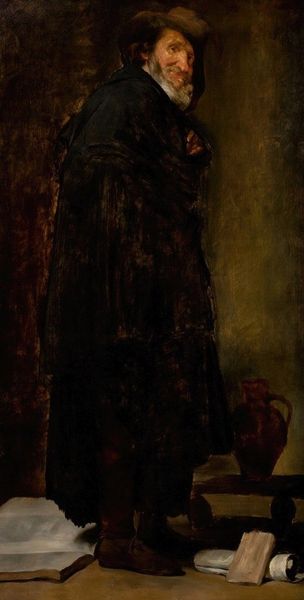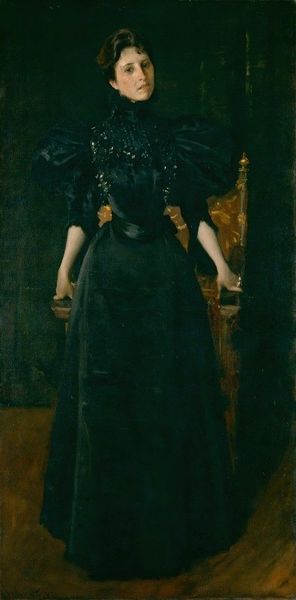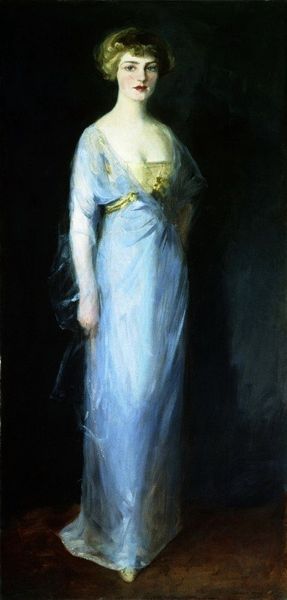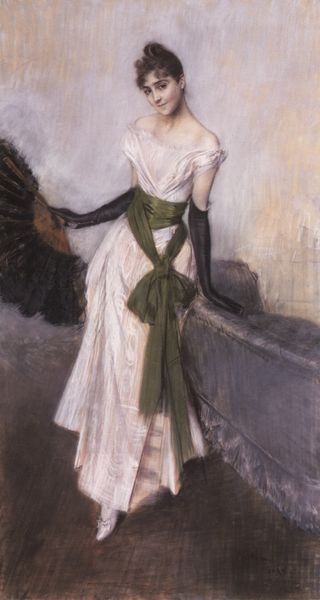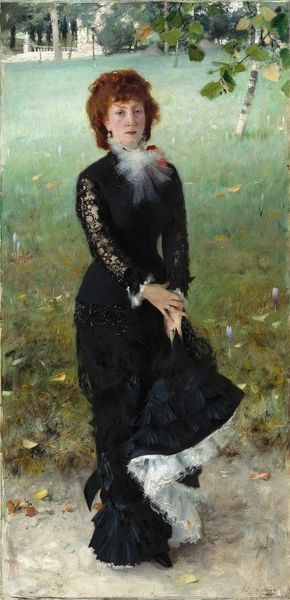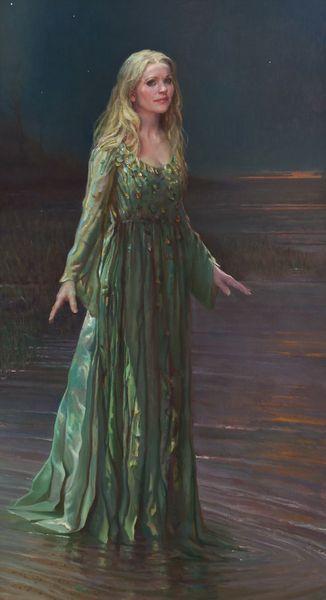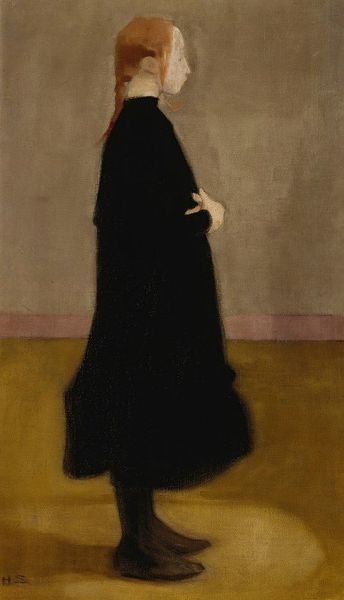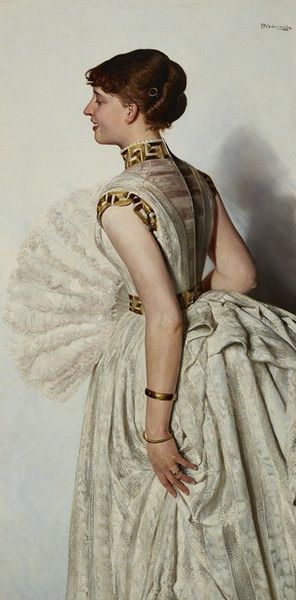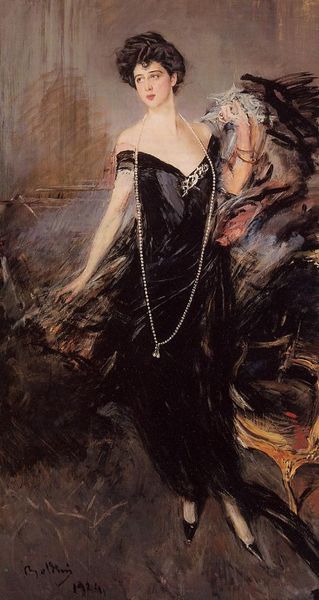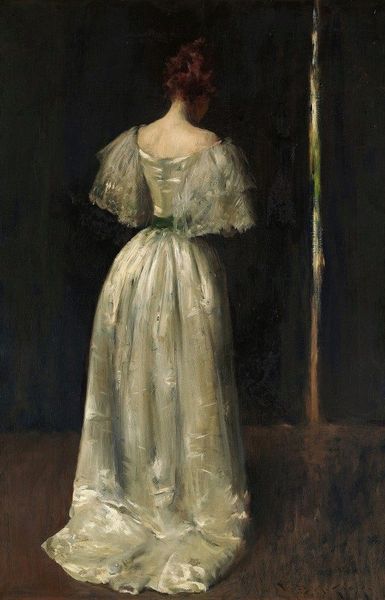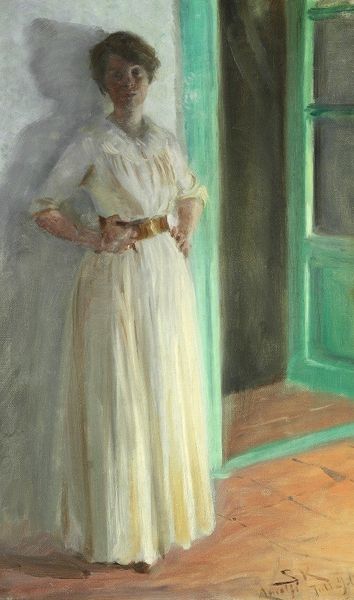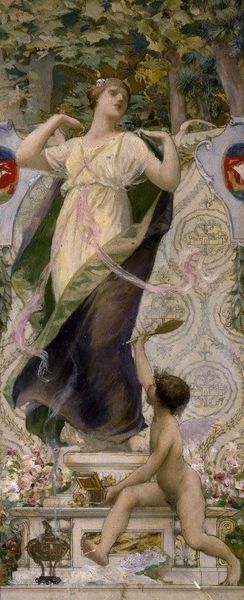
Copyright: Public Domain: Artvee
Giovanni Boldini’s ‘Portrait of Madame Roger-Jourdain’ is an oil painting with an emphasis on visual texture, achieved through the application of expressive brushwork. Boldini's technique, developed in the late 19th century, showcases the virtuosity of the artist’s hand. Look closely, and you’ll see how he uses long, flowing strokes to capture the sheen of fabric and the delicate features of the sitter. The visible brushwork imbues the work with movement and energy, particularly evident in the rendering of Madame Roger-Jourdain’s elaborate dress and hat. However, it's not just about surface appearances. Boldini was deeply engaged with the social context of his time, and his portraits often reflect the wealth and status of his sitters. The skilled labor involved in the production of Madame Roger-Jourdain’s attire, from the weaving of the fabric to the tailoring of the garment, speaks to the complex systems of labor and consumption that underpinned the Belle Époque. Ultimately, understanding the material and making of this painting allows us to appreciate its full cultural and social significance.
Comments
No comments
Be the first to comment and join the conversation on the ultimate creative platform.
